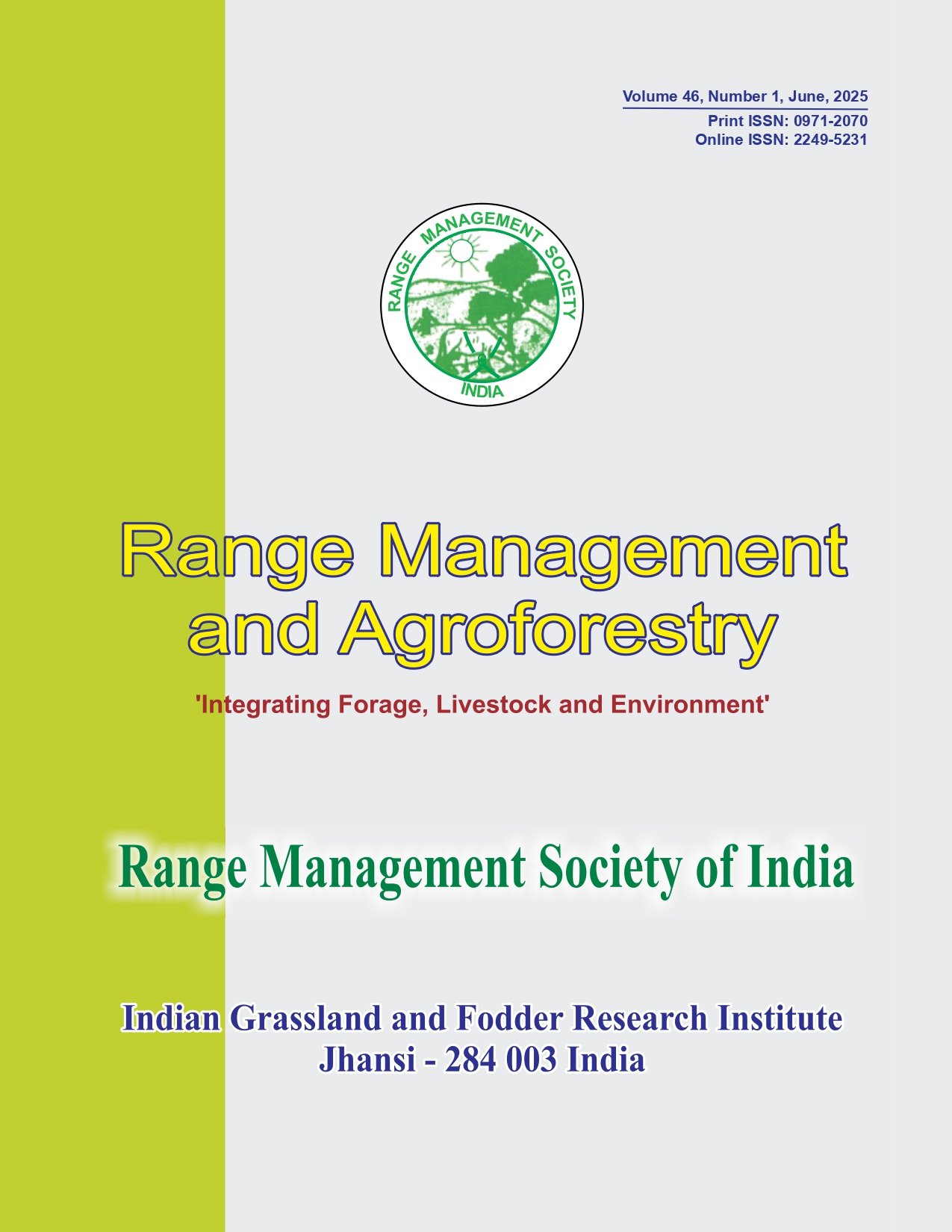Fodder yield and nutritive value of mulberry (Morus indica L.) under varying plant density and pruning frequency in coconut garden
Keywords:
Coconut, Fodder yield, Mulberry, Nutritive value, Plant density, Pruning frequencyAbstract
The present study was conducted to determine the optimum plant density and pruning frequency to maximise production of quality forage from mulberry (Morus indica L.) hedge rows underneath coconut garden, by comparing three levels of plant density viz., 49382, 37037 and 27777 plants ha-1 and three levels of pruning frequencies at 8, 12 and 16 weeks interval, laid out in 3 x 3 factorial randomized block design, replicated thrice. The results indicated that plant density showed prominent influence on forage yield whereas fodder nutritive value and dry fodder yield was significantly influenced by pruning frequency. Annual fodder biomass and foliage fraction was greater from the highest density stand. Crude fibre (CF) and ash content showed slight increment whereas, crude protein (CP) content significantly increased at higher densities indicating closer spacing for production of tender nutritive fodder. Increasing the pruning interval up to 12 weeks increased the dry matter, foliage and nutrient yields significantly and thereafter declined at 16 weeks. Even though higher leafstem ratio was observed at shorter interval of 8 weeks, total annual foliage yield was higher at 12 weeks pruning interval. However, ash content (8.96%) was significantly higher at the longest interval of 16 weeks. Thus in humid tropical conditions with annual rainfall of 210-300 cm, mulberry should be planted at the density of 49,382 plants ha-1 in the interspaces of coconut and harvested at interval of 8 weeks to yield the maximum fresh and dry fodder (48.26 and 11.05 Mg ha-1yr-1) with superior quality, which offers a low-cost source of quality forage to ruminants.




